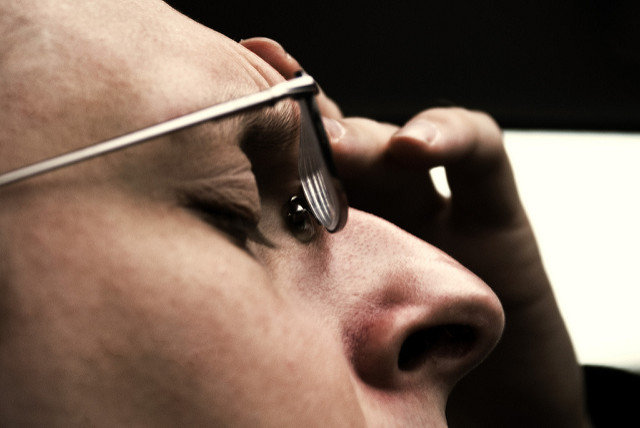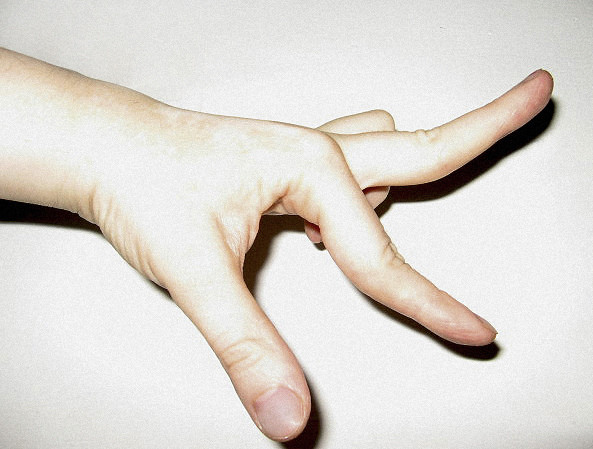RA in Hands: What Hand Joints are Affected by Rheumatoid Arthritis?
It’s no fun waking up like this: your hands ache. Your fingers are stiff and sometimes twisted. They may even feel hot and tender to the touch. There is no “good” hand that isn’t plagued by these symptoms. It’s another flare-up of rheumatoid arthritis (RA), a malady that can affect any joint in the body, but frequently settles in the hands.
What Is RA?
RA is a chronic autoimmune disorder. Because the hands have 25 joints each, they are particularly susceptible to this painful condition. It occurs when the immune system mistakenly attacks the joints, resulting in painful inflammation.

Some people who have RA experience symptoms all the time. Others may experience flare ups where their symptoms become more severe then abate. While autoimmune disorders are not well understood, researchers have learned that they tend to cluster. People who suffer from one are more likely to have another. For instance, if you have psoriasis, you are at risk of developing another disorder, such as RA.
Which Joints in the Hands Are Affected by RA?
The joints that connect your fingers to your hands (the metacarpophalangeal joints) are among the ones most often affected. You are also likely to experience symptoms in the the joints between your wrist and forearms and the middle knuckles in your fingers. The outermost joints (the distal interphalangeal joints) are the least likely to be affected by RA. Usually, people will not start feeling pain there until the joints further down the hand have been affected.
What Are the Symptoms of RA in the Hands?
The most common symptoms involve pain, swelling and stiffness in the hands and fingers. You may also experience:
- Numbness and tingling similar to carpal tunnel syndrome.
- Joints that are warm and tender to the touch.
- Misshapen joints in your wrist or fingers.
- Fatigue

You will usually experience symptoms in both hands. The pain and stiffness from RA lasts for more than an hour after waking up.
What Are the Treatments for RA in the Hands?
There is no cure for RA. However, there are a number of treatments that can reduce your symptoms and make you more comfortable.
Anti-inflammatory medications, both over-the-counter and prescription, can help control pain and inflammation during a flare up. Other medications can help prevent the flare ups that can cause pain and damage to your joints.

In some cases, resting the affected joints can help relieve pain. In others, people will find that regular exercise and/or stretching of the affected joints can relieve pain and stiffness. Physical therapy may be ordered to help strengthen the muscles that control those joints and to alleviate pain and swelling.
Foods that are rich in omega-3 fatty acids can help curb inflammation. These include fatty fish like salmon, sardines, trout and mackerel. If you do not like fish, you can add omega-3 fatty acids to your diet with flax seed oil, walnuts or purslane, a vegetable that is available in many Mexican and Asian markets.

High levels of stress seem to induce arthritis flare ups in some people. Avoiding stress can help you reduce the frequency and the severity of flare ups.
In some cases, surgery may be called for if the joints are severely damaged.
For a treatment at home, many people find that either ice or moist heat can help sooth RA pain. Using a hot compress against the affected area for 15 minutes can ease pain. This is especially helpful before exercise.

Ice packs can help reduce swelling of the affected joints. Use an insulated ice pack for 10 to 15 minutes at a time.
What modifications can help RA sufferers?
People who have RA may find that they lose manual dexterity, which can make many tasks more difficult. These are a few of the modifications that can make it easier to perform everyday tasks:
- Add accessories to doorknobs so they can be turned more easily.
- Use velcro fasteners on clothing instead of buttons.
- Switch to lightweight versions of household pots and pans.
- Add foam padding to pens and pencils to make them easier to hold.
What are some complications of RA?
In some cases, RA may deform the joints to the point where treatment is required. A boutonniere deformity involves the middle finger joint being being bent toward the palm while the last joint of the finger bends the opposite way. This is a result of chronic inflammation of the middle finger joint. The treatment for this usually involves surgery to keep the middle joint extended properly. In severe cases, surgery might be necessary.

Another common complication is the swan-neck deformity. This happens when the outermost joint of the finger and the one that connects it to the hand both bend while the middle joint stays straight. Over time, this can lead to a swan-neck position. This deformity makes it difficult to perform tasks like holding a cup, button a shirt or tie your shoes. The treatments for this can include ring or finger splints. Surgery may be needed to realign or fuse the joints so that they move properly.
Summing Up
RA can cause serious pain in the hands and interfere with your ability to enjoy everyday tasks like cooking meals, driving or typing. If you have RA, it is important to get regular medical check-ups so that your doctor can stay on top of your condition. New treatments and medications come out on a regular basis, so you may find new relief options that were not available in the past. By keeping up with regular treatment and doing what you can to reduce the factors that cause you pain, you can stay comfortable and avoid or delay additional damage to your joints.
